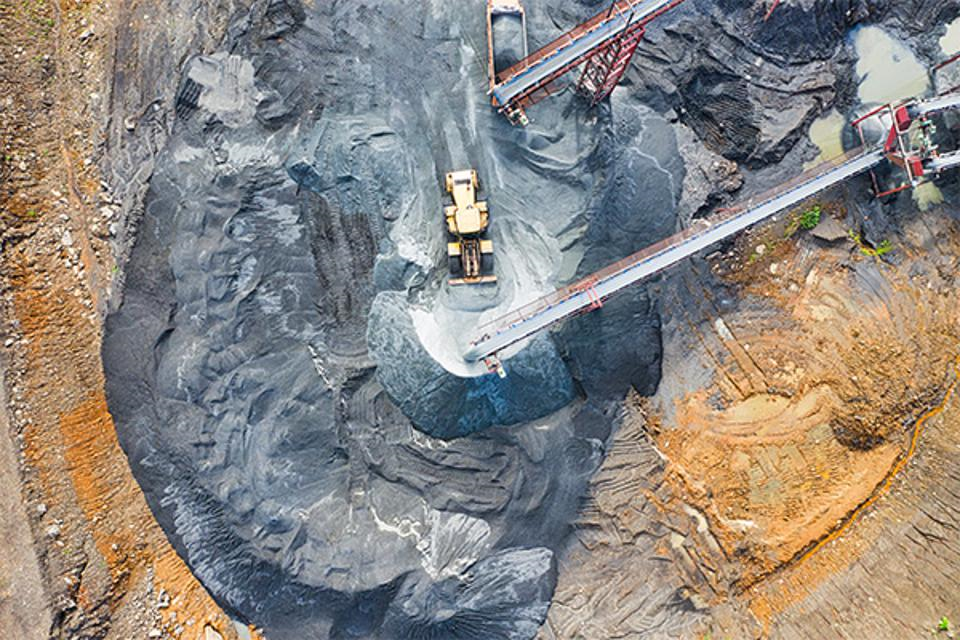RAPID DEVELOPMENT AND PRODUCTION START-UP POTENTIAL
Good regional infrastructure available - road, rail, power, and water.
The Lushan deposit, which is a carbonatitic breccia pipe with a diameter of 1.5 km and a height of 18 meters above the surrounding plain, is well-located on the surface.
Monazite contains rare earths (97%) for which there are established commercial methods of extracting.
Critical Rare Earth Oxides (CREOs) are distributed efficiently, and the radiation levels are low.
Status of Exploration
Over the Lushan deposit, a comprehensive exploration database containing geological, geochemical, and geophysical data has been developed. The Lushan deposit's excellent exposure allowed for comprehensive geological mapping and surface sampling, which helped determine the carbonatite's outcrop extent.
Surface radiometric surveys have been helpful in identifying carbonatite-exposed locations. Systematic outcrop stripping and channel sampling along the surface trace of the diamond drill lines have aided in characterizing the mineralized zone at the surface and connecting it to mineralization discovered through diamond drilling. To collect varied depth intersections of the mineralization, a total of 72 inclined and vertical diamond drill holes totaling 6,852.28 m were drilled in a series of fences spaced roughly 25 m apart.
Channel sampling was used to confine the outcropping position of the mineralized zone on each drill fence. At a nominal interval of one meter, the channels and drill core were sampled, and the assay findings, as well as the bulk density measurements, were entered into the Project database.
Mineral Reserves
The following procedure was used to convert Mineral Resources to Mineral Reserves:
- A pit optimization and design analysis/exercise were accomplished;
- In the pit optimization and design exercise, only the Indicated Mineral Resources were evaluated;
- Input criteria were developed for the pit optimization analysis;
- The ideal pit shell created by the pit optimization was used to construct a functional pit design. Ramps, safety berms, and other features not addressed by the optimization algorithms were included in the practical pit design;
- Based on the mine owner's declared production target, a production schedule was developed from the pit design;
- The operational and capital expenses for the mine's construction and maintenance were estimated;
- A discounted cash flow model was created using the production schedule and cost assumptions, as well as the predicted realized product prices and plant recoveries. The financial modeling resulted in a favorable outcome, indicating that the Project is viable based on the hypothesis and estimates established in the study.
Mining
A geotechnical study was carried out, which included:
- A site visit;
- Geotechnical logging of the core;
- Geotechnical data collection;
- Data analysis and assimilation to identify mine design criteria.
|
Material properties |
Nepheline Syenite |
Weathered fenite and carbonatite / Breccias |
Fresh Carbonatite |
Fresh Fenite |
Mixed carbonatite and fenite |
Feldspathic breccia |
|
Inferred thickness for a ±200m slope (m) |
15.00 |
20.00 |
60.00 |
50.00 |
60.00 |
20.00 |
|
Average RMR89 |
58.00 |
45.00 |
63.13 |
63.13 |
54.50 |
45.00 |
|
Average GSI |
58.00 |
48.00 |
65.00 |
65.00 |
60.38 |
48.00 |
|
UCS (Range) |
100-300 |
30-100 |
100-300 |
100-300 |
100-300 |
30-100 |
|
Disturbance factor (D) |
0.70 |
0.70 |
0.70 |
0.70 |
0.70 |
0.70 |
|
Density ρ (kg/m3 ) |
2700.00 |
2000-2700 |
2700-3000 |
2700 |
2700-3000 |
2000-2700 |
|
Cohesion (kPa) |
5000-15000 |
700-5000 |
5000-15000 |
5000-15000 |
5000-15000 |
700-5000 |
|
Friction angle φ (°) |
25-30 |
20-25 |
25-30 |
25-30 |
25-30 |
20-25 |
Note: RMR89 = Rock Mass Rating
The optimum pit shell, with the highest NPV, was selected as the foundation for the practical open pit design.
The open-pit mining method is a normal drill, blast, truck, and shovel operation.
Waste loading and hauling are constantly available.
To maintain effective grade control, ore mining is handled during the appropriate shift.
A specially created package of mine design software was used to construct a pit design. The ultimate open pit's overall dimensions will be roughly 570 meters north to south, 640 meters east to west, and 250 meters deep when measured from the pit's highest point on the southern side. The highest bench is at an elevation of 845 meters, while the lowest pit bottom is at a height of 445 meters.

Process Overview
The purification plant and the recovery plant are both parts of the process flow sheet. The compaction and flotation circuits make up the purification plant. The compaction circuit's goal is to lower the size of solid ore particles and so increase their surface area, allowing valuable materials trapped within gangue minerals to be liberated.
Crushing and grinding are used to accomplish the process. The mineralized material is upgraded by flotation. Flotation is a separation procedure that takes advantage of the different surface characteristics of the ore's constituent components. Mineral particles are selectively attached to air bubbles formed in the flotation cell, which float to the surface of the slurry and subsequently flow over the cell lip into the launders. To separate rare earth oxide minerals from gangue minerals, a selective flotation reagent regime is applied.
A two-stage selective hydrochloric acid leach method is included in the recovery process flow sheet. The hydrochloric acid is recycled by precipitating calcium sulphate with sulphuric acid. Caustic conversion, rare earth dissolution, purification, cerium rejection, and rare earth hydroxide precipitation are all included in the process flow sheet. This method has a number of advantages, including a large reduction in acid costs and a higher concentration of rare earths, which lowers downstream capital and operating costs.
